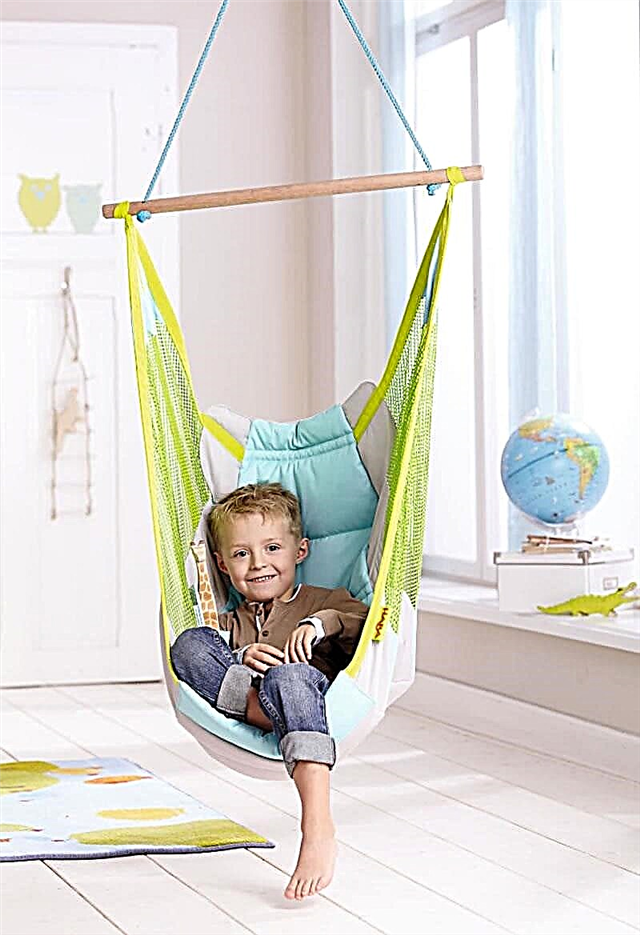The first month of a child's life, the neonatal period, is a crucial period of time, which is quite stressful for both parents and the baby. Immediately after birth, a son or daughter has to adapt to life outside the womb, receive the first vaccination (against viral hepatitis). All organ systems begin to rebuild to ensure an independent life. At this time, you need to be especially careful about how the baby is developing, take him to the pediatrician.

A baby at 1 month is actively developing
So what skills should a son or daughter acquire by the age of one month?
Fisicoe develope month old baby
The physical development of all children takes place individually. Therefore, minor deviations from the standards are quite acceptable. Parents' reactions also differ. Some tend to exaggerate the achievements of their baby, others worry about the slightest reason. Usually every type of parent turns out to be wrong to some extent.

One month old baby lies
During the first week of life, a baby can lose 10 percent of its weight. This is a normal reaction to changes in the external environment. After that, the baby again begins to gain precious grams. By the end of the second week, he weighs about the same as at the time of birth. By the turn of one month, the child begins to actively gain weight. On average, the gain can range from 15 to 30 grams per day. A son or daughter may not develop the way it is written in the textbooks. It is important to visit a doctor regularly so that he can identify abnormalities and eliminate them in time.
Differences in the development of boys and girls
The height and weight of girls can be, on average, somewhat less than that of boys: 3.6-4.8 kilograms and 51.7-55.7 centimeters versus 3.9-5.1 kilograms and 52.7-56.7 centimeters ... Moreover, the greater the growth, the more the weight should be, and vice versa. There are specialized calculators that allow you to calculate rates online.

Cute baby 1 month
Important! Rates are only approximate. Do not sound the alarm if your weight or height is less than average. For girls, let's say a weight of 3.2 kilograms and a height of 50 centimeters, for boys, a weight of 3.4 kilograms is possible with a height of 51.1 centimeters.
What a month-old baby can do
From a baby at 1 month. don't expect anything special. The nervous system is just developing, but even at this age, the child has some skills.
The average kid of this age doesn't have much to learn. So what should a newborn at 1 month be able to do? This list of skills does not always match the real picture, but the approximate set is as follows:
- Automatic gait of a newborn. If you hold the baby and try to put his foot on the floor, he will try to walk. You should not try at this age to make any attempts to teach a child to walk. He still has a very weak spine.
- Turning the head. If you put the baby on his stomach, he can turn his head. But the neck is still quite weak, so you need to hold the head.
- See at a distance of twenty to thirty centimeters. Newborns have poor vision, by the age of 1 month, their vision begins to appear slightly. Monthly babies still remain myopic. They also see high-contrast objects better.
- Define the human face. Scientists have shown that babies at the age of one month react more to living human faces than to the muzzle of some monkey.
- Hear parental voices as well as high frequency sounds.
- Distinguish between the smell of the mother's nipple and breast milk.
- Cry. Children at this age know how to communicate only in this way. During the day, the baby can cry for up to 3 hours.
Reflexes of a healthy baby 1 month old
A baby is born with a certain number of unconditioned reflexes. Over time, they fade away if the child develops correctly. At 1 month, sucking, swallowing, coughing and a number of other reflexes are especially well pronounced. TWhich disappear over time:
- Proboscis. If you punch the child's cheek near the corner of the mouth, he pulls out the lips with a tube. Thus, he tries to find the mother's breast.
- A positive Babinsky reflex. If the skin on the inner surface of the foot becomes irritated, the toes flex.
- Moro's grasping reflex. If you slap the baby on the buttocks or hit the surface on which he is lying, the baby will make a two-way embracing movement with his hands.
- Turning the head to the side if the baby is placed on its stomach. Thus, he is protected from suffocation. Therefore, even the smallest children, if they are healthy, can lie on their stomachs.
- Walking reflex. It is necessary to take the child upright and place him on a hard surface, while holding the baby by the hands. If you tilt it a little, you will notice involuntary attempts to walk. But at such an early age, you should not get carried away with this exercise, since the spine of the baby is not yet sufficiently formed.
- Palmar-oral. Opening the mouth, followed by a slight tilt of the head forward when pressing on the palm of the baby.
- Robinson's tonic reflex. If you touch the inner surface of the palm with your finger or an object, the baby will grab it.
- Kernig's symptom. If the leg is bent at the hip joint, then the child cannot fully extend it at the knee.
- Crawling phenomenon. If the child is put on his tummy and the palm is placed on the inner part of the foot, the baby will push off from it.
Of these reflexes, the last three are most often preserved.
Motor activity of a month-old baby
In general, the child's physical activity at 1 month is weak. Most of the muscles are not yet developed. All the movements that the baby makes at this age are genetically laid down at the level of reflexes. Most of the time, the child is in a dream. At this age, the waking time is only 45 minutes - 1 hour. Daytime sleep can last from 15 minutes to 2-3 hours. So from 4 to 8 times. At night, a child sleeps like an adult - 8-10 hours, but can wake up in the middle of the night.

Already a month, will soon be an adult
Taking care of your baby's healthy sleep is extremely important. Renowned pediatrician, Evgeny Komarovsky, gave some recommendations for ensuring healthy sleep that parents need to know:
- Get enough sleep for the parents themselves. The child needs healthy and rested parents.
- Prepare your child for a night's sleep in advance. The baby's sleep should be synchronized with the family's day regimen.
- A one month old baby should sleep in a crib in the parents' bedroom.
- Daytime sleep should be normalized. Only then will the child get enough sleep at night.
- At the age of one month, the baby can eat 1-2 times a night. This is normal. After 6 months, there will be no such need.
- It is important to maintain the correct indoor climate. The optimum temperature in the room is 18-20 degrees Celsius with a humidity of 50-70 percent.
- It is imperative to bathe the child. This is good for his hygiene, and also has a positive effect on sleep.
- Do not use pillows until the baby is two years old.
Important! Since there is still no special physical activity at the age of one month, special attention should be paid to sleep.
Mental development of a baby at 1 month
In the first month of life, active mental development of a boy or girl begins. After just a few weeks of life, the child acquires a small learning ability. For example, if the baby wants to eat, or he feels discomfort, he starts crying.
At the age of one month, it becomes possible to accustom the child to a diet or sleep. This should be done with extreme caution. At the age of one month, the child's psyche is very vulnerable, therefore, if you do not respond to his cry for a long time, serious stress can arise.

One month old baby looks at a toy
At this age, it is necessary to communicate a lot with the baby. You can talk about your affairs, what is happening with your dad, grandmother, grandfather, sing songs. Then the list of what a child can do at 1 month, 2, 3, and so on will grow very quickly.
How developed are emotions
It is impossible to artificially separate mental development from emotional development. The first concept is broader and includes the development of thinking, sensations, perception, attention and other mental processes. Emotions are one of them. The mood that adults are in most of the time greatly affects the mental development of a child.
Even the smallest babies understand well the emotional state of the mother and mirror it. If she is annoyed, agitated, or just tired, the baby will feel discomfort that comes out through crying. At the age of one month, the child still does not know how to express his emotions in another way. There are rudiments of joy, but much more often the child cries.
The toddler has a revitalization complex that begins to form somewhere in the third week, by the end of the first month it reveals itself in full glory. Then it grows up to 3-4 months, after which more complex behavior patterns are formed in the baby.
The revitalization complex contains four components:
- Long, focused look towards the adult.
- Joy accompanied by a smile.
- Revitalization of motor reactions - the child can begin to more actively move his head, arms and legs, bend his back, and so on.
- Vocalization - the simplest sounds made by a child: humming, humming and screaming.
If it is not enough to communicate with the child in the first weeks of life, then the revitalization complex manifests itself much later, and partially. Initially, it was believed that the revitalization complex is the child's first conscious reaction to the actions of an adult, but after a while it was found that this is just a reflex.
Thus, the list of what a 1 month old baby should be able to do is not very large. At this age, there is no need to talk about any skills, since the one-month-old baby is still very small. The set of what a baby can do at 1 month can be described in a few words: eat, sleep, rejoice at the appearance of an adult and a few more elementary reflexes that go away with age.



